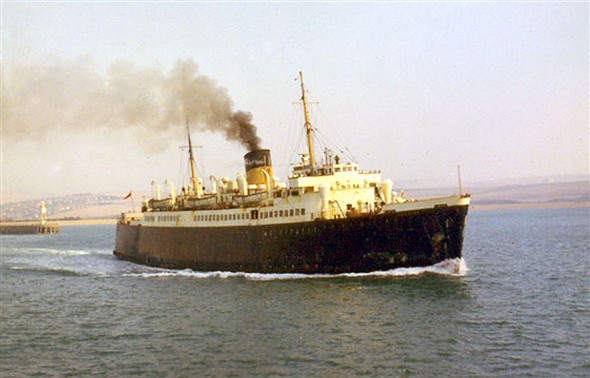CAR FERRIES FALAISE AND NORMANNIA
Conversions that brought life back to the Dieppe run
By Derek Longly
There was a time when it appeared the Newhaven to Dieppe service run by British Railways was doomed to come to an end. Passenger numbers had fallen and the route had not caught up with the introduction of the car ferry which was becoming increasingly popular with holidaymakers especially on the runs out of Dover to the continent.
Only the Brighton of the classic ferries remained and her services were reduced. Then along came a lady well past her prime converted from classic ferry on the service out of Southampton to Le Havre into a 'new' car ferry to re-invigorate the Newhaven service - the Falaise to the rescue!
As more people returned to the route after her introduction and in order to maintain the service when, from time to time, she was taken off duty for various reasons, her one time companion at Southampton the Normannia would appear to deputise for her.
Sailing on either of them was something of a step back in time to an earlier era.
The photos show these two in their heyday when they were amongst the few remaining steamships still in service.

Falaise as she appeared when first introduced on the Newhaven - Dieppe service
Derek Longly
Falaise with monastral blue hull but without the Newhaven - Dieppe service funnel
Derek Longly
Falaise in the full Newhaven - Dieppe service livery
Derek Longly
Falaise - view over the bow mid-Channel
Derek Longly
The glories of steam!
Derek Longly
Falaise the cramped boat deck
Derek Longly
Falaise - Aft docking bridge
Derek Longly
Normannia in British Railways colours
Derek Longly
Normannia in Sealink days
Derek Longly
Normannia - Original 1st Class Bar Lounge with leather & wood panelling in abundance
Derek Longly
Normannia - re-fitted side lounge awaiting passengers
Derek Longly
Normannia - boiler room
Derek Longly
Normannia - engine room
Derek Longly